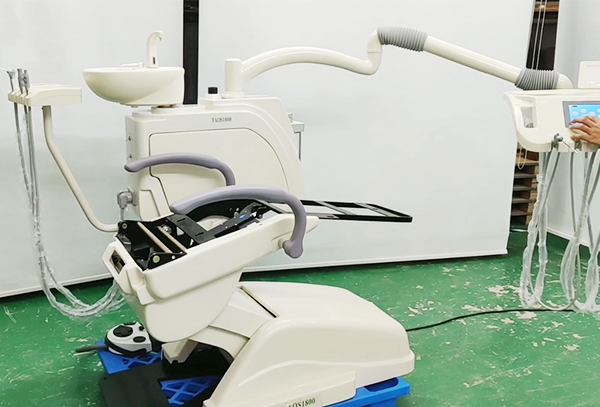Installing a dental chair is a critical task that requires careful attention to detail to ensure the comfort and safety of both the dental practitioner and the patient. Here are some key considerations when installing a dental chair.
Space Planning:
1. Ensure there is enough space in the treatment room for the dental chair and associated equipment.
2. Plan the layout to allow for easy access to the chair and other necessary tools.
Electrical Requirements:
1. Check the electrical specifications of the dental chair and ensure that the electrical supply in the room meets these requirements.
2. Install power outlets in convenient locations for additional equipment.
Plumbing Considerations:
1. If the dental chair requires water connections, ensure that the plumbing is properly installed.
2. Check for any leaks or issues with water pressure.
Lighting:
Adequate lighting is crucial for dental procedures. Ensure that the lighting in the treatment room is sufficient and properly positioned.
Ventilation:
Good ventilation is essential to maintain a comfortable environment for both the dentist and the patient.Consider installing proper ventilation systems to remove airborne contaminants.
Infection Control:
1. Follow proper infection control protocols during installation to prevent contamination.
2. Ensure that all surfaces are easy to clean and disinfect.
Ergonomics:
Pay attention to the ergonomic design of the dental chair to provide comfort for both the dentist and the patient during procedures.Position the chair and other equipment at the right height to prevent strain.
Compliance with Regulations:
1. Ensure that the installation complies with local regulations and standards for dental practices.
2. Obtain any necessary permits or approvals.
Flooring:
1. Choose flooring materials that are easy to clean and maintain in a dental setting.
2. Consider non-slip surfaces for safety.
Accessibility:
1. Ensure that the dental chair is accessible to patients with disabilities.
2. Consider ramps or lifts if necessary.
Backup Systems:
Install backup systems for critical components such as power and lighting to ensure continuity during power outages.
Training:
1. Train the dental staff on the proper use and maintenance of the dental chair.
2. Provide instructions for emergency procedures.
Manufacturer’s Guidelines:
Follow the manufacturer’s guidelines and recommendations for installation and maintenance.
Warranty and Service Agreements:
Keep records of warranties and service agreements for the dental chair and associated equipment.
By paying attention to these factors, you can contribute to a safe, efficient, and comfortable environment in your dental practice. It’s also advisable to consult with professionals, such as dental equipment suppliers or installation experts, to ensure a smooth installation process.
Lingchen Dental – Easy to Dentist.
Post time: Dec-15-2023

